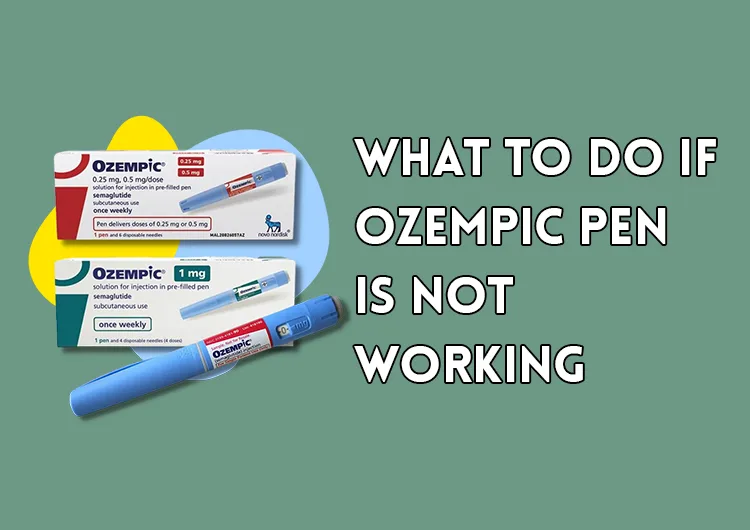If you use Ozempic to manage your diabetes, it is important to be familiar with how to identify and address common issues that could disrupt the delivery of medication and ensure optimal management. Knowing this information and acting accordingly this will ensure proper administration and improved health management of diabetes.
Know how to tell when your pen is empty by turning the dose selector; if it stops before reaching 0.5 mg, that indicates not enough Ozempic remains for use, and it should be discarded.
Check the Needle
If your Ozempic pen is experiencing difficulties that are unrelated to improper injection technique, the issue could lie with its needle. Check for blockages or damage before replacing it with a new needle as soon as possible.
Prior to every use, it is vitally important that the needle of your Ozempic pen be thoroughly checked to ensure its functionality. In case any problems arise with its operation, consult a physician as soon as possible for advice and treatment options.
Always use Novo Nordisk disposable needles with your Ozempic pen. Make sure that the injection site is cleaned thoroughly prior to injection, and double-check that you have taken the appropriate dose by turning your dose selector so it lands directly over the flow check symbol.
Check the Battery
Your pen is powered by a rechargeable lithium battery. To avoid issues with not injecting medication or displaying error messages, keep its charge topped up to prevent potential malfunction. You can check the battery level by looking at the LED light or turning the dose selector; green should indicate fully charged, while red or off means it is time for new batteries to be purchased.
Before administering an injection under the skin in your abdomen, thigh, or upper arm, ensure that a clean disposable needle is attached and keep a sharps container handy to dispose of used needles properly.
Follow all instructions when using an Ozempic pen, and always carry an extra pen and needles just in case an emergency arises. Inject medications only when your blood sugar is near target levels; aerobic exercise and weight loss may also help.
Check the Medication Level
If zero does not appear after pressing and holding the dose button, there may be an issue with your medication level. You should contact your healthcare provider for guidance; they may suggest changing needles, reviewing your injection technique, replacing batteries, refilling the pen with fresh ones, or storing it properly.
At regular intervals, it is essential to monitor your medication levels. One way of doing this is to dial your dose selector until it reaches the amount prescribed by your physician – 0.25 mg, 0.5 mg, 1 mg, or 2 mg in your pen should do it if there is not enough remaining in it; otherwise you must start using another one immediately.
Preventing issues with your Ozempic pen requires proper care, from keeping it clean to storing it appropriately and not exposing it to extreme temperatures. Furthermore, always use new needles when possible and dispose of all spent needles in an approved sharps container.
Check the Temperature
Ozempic pens must remain refrigerated until their first use. After that, they may be stored at room temperature (59oF to 86oF or 15oC to 30oC) provided they have not been left for more than 56 days without refrigeration – in which case, you must dispose of them even if there is still medication inside them.
To test the temperature of an Ozempic pen, remove its cap and look through its window on one side of the pen. If this window is clear, this means the medication is fine and ready for use.
Consequently, if the pen is cold, it is likely that the medication has expired and must be replaced. To determine its expiry date, consult your medical provider or read through the manufacturer’s instructions.
